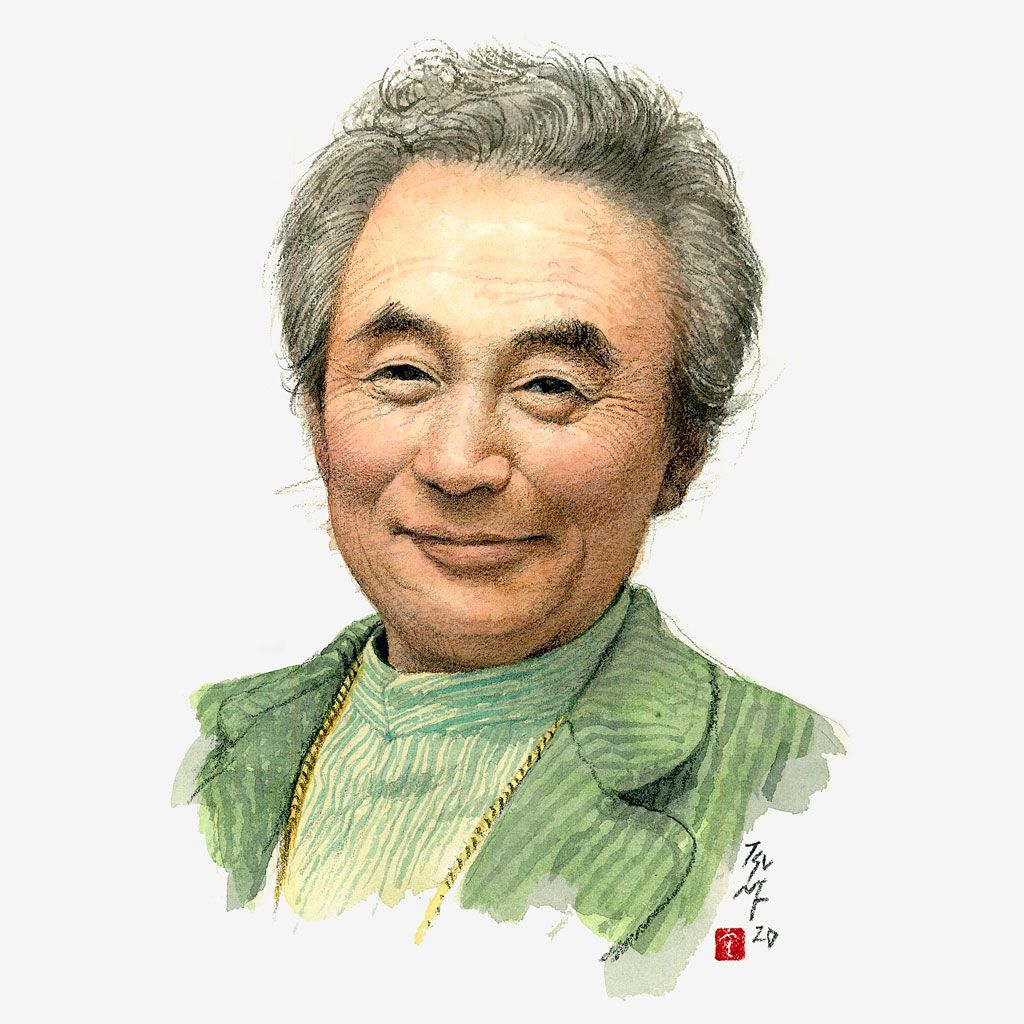Inui, Saburō
乾三郎
Japanese Industrial Designer1911–1991
Inui Saburō, born in 1911, was a craftsman who specialized in making furniture from molded plywood. He developed the technique at the Industrial Arts Institute, where he assisted Yanagi Sōri in creating his iconic Butterfly Stool. Inui later joined Tendō Mokkō, bringing decades of experience with plywood to the furniture company. There he designed the award-winning Zataku low table and the Ply Chair. Both exemplify his talent for making simple yet beautiful furniture from molded plywood. Inui Saburō received the Kitaro Kunii Industrial Arts Award for his achievements.
Inui Saburō was born in 1911 in Hsinchu, Taiwan, then a dependency of the Empire of Japan.
After moving to Japan in 1936, Inui joined the woodworking department of the Industrial Arts Institute (IAI). The IAI was established in 1928 under the aegis of the Ministry of Commerce and Industry as a research institution to modernize Japan's local industries, improve their quality and productivity, and increase exports.
At the Industrial Arts Institute, Inui extensively researched the production and application of molded plywood alongside Kenmochi Isamu, who had joined the woodworking department four years earlier. The two would form a lasting friendship and continue to collaborate even after Kenmochi left the Industrial Arts Institute in 1955 to start his own company, Kenmochi Design Associates.
During the war, the Industrial Arts Institute (IAI) worked with the newly formed company Tendō Mokkō to produce wooden ammunition boxes and decoy planes for the Japanese military using molded plywood. IAI continued to work with Tendo after the war, shifting to furniture production for the Allied Forces stationed in Japan and, from the early 1950s, the domestic market.
Inui is also known as the craftsman who brought Yanagi Sōri's masterpiece, the Butterfly Stool, into production. Yanagi was interested in using the plywood technique, but could not find a factory that could reproduce the delicate curves of his prototype, and turned to the Industrial Arts Institute for advice. Inui accepted the challenge. In 1956, after two years of development, the Butterfly Stool went into production at Tendo Mokko.
Yanagi Sōri later said, "If it weren't for Inui Saburo, I wouldn't have been able to realize the Butterfly Stool."
1958 marked a milestone in Inui's career when he left the Industrial Arts Institute, where he had worked for the previous twenty-two years, to join Tendō Mokkō.
Inui continues to contribute to creating award-winning furniture at Tendō, drawing on his decades of experience with plywood. The Teiza chair, designed by Cho Daisaku and produced in 1960, is one of the outstanding masterpieces. Inui also had the opportunity to collaborate again with Isamu Kenmochi, his colleague at the Industrial Arts Institute, who had become a prominent designer and was commissioned to create furniture for Tendō.
Now an integral part of Tendō, Inui designed the "Zataku" low table, released in 1959, and the "Ply Chair" a year later, both exemplify his talent for making beautiful, uncomplicated furniture from molded plywood.
The "Zataku" table won both the Good Design Award and the Long Life Design Award in 1964 and 1981, respectively. In 1973, the Kitaro Kunii Industrial Arts Award honored the achievements of Inui Saburo.
Details
- Family Name
乾
Inui
- Given Name
三郎
Saburō
- Born
1911
- Died
1991
- Gender
- Male
- Nationality
- Japan
- Occupation
- Industrial Designer
Timeline
| Year | Age | |
|---|---|---|
| 1911 | Born in Hsinchu, Taiwan | |
| 1936 | 25 | Joins Industrial Arts Institute (IAI). |
| 1958 | 47 | Joins Tendō Mokkō. |
| 1964 | 53 | Zataku wins Good Design Award. |
| 1973 | 62 | Receives the Kitaro Kunii Industrial Arts Award. |
| 1981 | 70 | Receives the Long Life Design Award, a Good Design award, for the Zataku low table. |
| 1991 | 80 | Passes away at the age of 80 years. |

